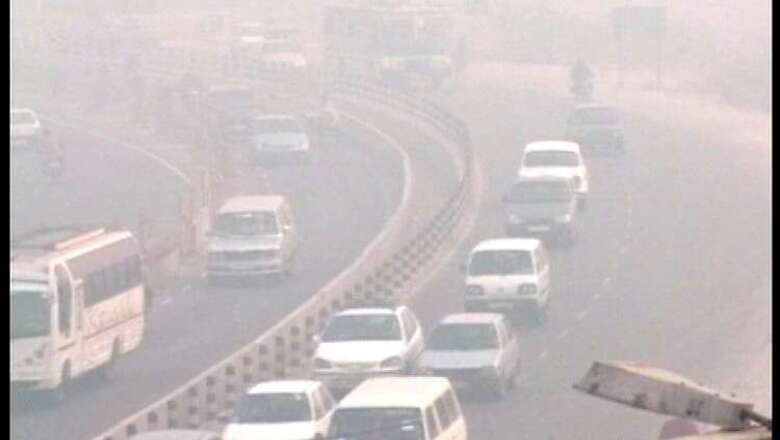
views
New Delhi: Air quality of Delhi will dip further in the next two days with an expected rise in the level of PM 2.5, whose average was 'very poor' at 200 micrograms per cubic metre on Tuesday, due to the influx of pollutants from the Indo-gangetic plains. Levels of PM 2.5 and PM 10, pollutants of microscopic sizes, were largely in the 'very poor' category in Centre's System of Air Quality and Weather Forecasting and Research (SAFAR) stations.
However, few CPCB stations like Anand Vihar, Mandir Marg, Punjabi Bagh and R K Puram had air quality in the 'severe' category which has the potential to affect healthy people and "seriously impact" those with existing respiratory ailments. "24-hour average of PM 2.5 was 200 today. On Monday it was 189 while on Wednesday it is expected to touch 210. It is due to influx of pollutants from distant sources, mostly due to the north-easterlies from the Indo-gangetic plains, an area which stretches from Kolkata to Rajasthan," Chief Project Scientist of SAFAR Gufran Beig said.
Beig pointed out that there has been no significant change in PM 10 levels, which are much coarser than PM 2.5 and cannot travel long distances, indicating that the spurt has not been caused by local factors. "Had the rise been due to local conditions, both PM 2.5 and PM 10 would have risen. On top of that there has been no drop in temperature either which also increases concentration of pollutants," Beig said.
Usual highly polluted spots such as Anand Vihar and Punjabi Bagh continued to have pollutants, five to 10 times above the prescribed limits. 541 and 1431 were the real time PM 2.5 and PM 10 levels of Anand Vihar at 7 PM while the corresponding figures were 454 and 182 at Punjabi Bagh. On prolonged exposure to 'very poor' quality air, which signifies PM 10 and PM 2.5 levels between 351 and 420, and 211 to 252 micro gram per cubic metre respectively one can develop respiratory illness.
Permissible levels of PM (particulate matter) 2.5 and PM 10 are 60 and 100 micrograms per cubic metre respectively.These particles, which are the major pollutants in the capital's air, can harm the respiratory system as the particles embed themselves deep inside the lungs.


















Comments
0 comment